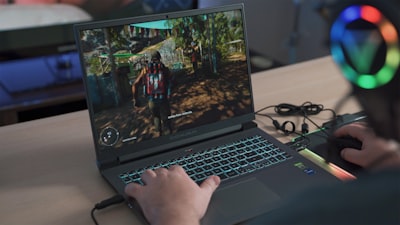How to Make Money Designing Free to Play Games
How to Make Money Designing Free to Play Games (updated)
How to Make Money Designing Free to Play Games, because designers are in high demand. But what is free to play game design and how do you get into this booming industry?
In this post, you will learn everything there is to know about free to play game design – from the basic concepts and development process, to monetization strategies. If you’re looking for a career in game development but feel like making mobile games isn’t for you, then this is the guide for you.

Overview of free to play game design
Designing a game as a free to play product can be a lucrative business if done correctly. However, it involves understanding the basics of design and development.
You must understand mechanics in detail. You must also analyze the market for popular free to play games. This will help you identify player demographics and gaming habits to design games that resonate with your audience.
Understanding the Basics of Free to Play Design
Players download a free game for the purpose of gaining in-game benefits. Benefits such as faster speed, extra lives, and extra content in the form of new levels. These benefits can be costly and may require players to pay a fee in order to access them.
Alternatively, free-to-play games may include optional in-app purchases that provide the paying players with additional features or enhancements without requiring them to pay a lot of money. Free-to-play typically have a monetization strategy that helps players balance gameplay with the costs of accessing in-game benefits.

Crafting Engaging Gameplay
To ensure a game is engaging and fun, it must have mechanics that keep players engaged. A good game must have multiple levels of difficulty, with each one challenging players in a different way. It’s important to create a game that has different play styles, such as casual and hardcore, to cater to different player preferences.
The best games play with these play styles seamlessly to provide players with a unique and constantly engaging experience.
Designing for Retention
Retention and engagement are the most important factors in monetizing a game. Ret retention and engagement require designing for different types of players. It is essential to design a game that appeals to all types of players, from casual players to hardcore gamers. To reach all types of players, you must ensure that your game offers a variety of content at various price points.
You must also design games that can be completed within a certain time period. These factors help you monetize your game and make it sustainable over time. By finding the balance between retention and engagement, you can effectively monetize your game and make it profitable.

Different Ways to a Monetization Strategy
In-app purchases are a popular way to monetize free to play games. They offer premium content or items within the game for payment, which can help increase revenue and player engagement. In-app purchases come in various forms, such as virtual currency, extends time, or additional levels.
They have the advantage of offering players flexibility and convenience but can also lead to financial dependency. The best way to integrate them into your game monetization strategy is to analyze your game’s users and their purchasing habits. This will help you determine the most effective form of in-app purchases for your game.
In-app purchases and microtransactions
One of the most successful monetization methods for video games. In-app purchases allow players to purchase game items such as characters, upgrades, and extra levels with real money. This monetization strategy has changed game design and gameplay by allowing players to ‘level up’ in a game faster, access exclusive content earlier, and buy additional game items.
In-app purchases have revolutionized the gaming industry by offering players new ways to play and enjoy games. However, some consumers are skeptical about in-app purchases and microtransactions because they can easily become addicted to buying game items for real money. Nevertheless, in-app purchases play an important role in monetizing games and making them more engaging for players.

Creating content that encourages in-game purchases
Creating content that encourages in-game purchases is an essential part of any game monetization strategy. Offering exclusive levels, characters, or items for purchase can help drive revenue and increase player engagement. Creating a virtual currency system that allows players to buy certain items or upgrades can also be beneficial.
Other options include offering subscription plans or exclusive membership packages. All of these options can help create a unique game experience and increase revenue.
Selling premium content or services for a subscription
One of the most common ways to monetize a game is by offering premium content such as subscriptions and VIP membership. Games can also monetize by implementing shopping interfaces that allow players to buy items with alternative currencies in the game.
Companies can also monetize apps by offering free virtual goods sponsored by companies, collectible card games, comics, and micropayment items. These are just a few ways games monetize their content and services.

Offering virtual currency for real money
Virtual currencies can be used in apps as a form of monetization. Rewards such as coins, gems, or gold can be exchanged for real money at online game and app markets like Opensea. Cryptocurrency is a level playing field where all users are equal and transactions are recorded in a digital ledger.
Such a system has the potential to revolutionize the gaming industry by eliminating costly intermediaries and enabling users to truly own their gameplay data. In addition to offering virtual currencies, some gaming platforms also offer real-world rewards such as vouchers, points, or cash-out options.
By combining these two forms of monetization, game developers can offer innovative microtransactions that keep players engaged and interested in their games.
Building a Loyal Player Base
In the gaming industry, offering games for free is an effective way of building a loyal player base. When players get a game for free, they become more determined to play the game and try hard to succeed.
This leads to a heightened sense of satisfaction and retention, which means they are likely to come back for more of that game in the future. In addition, offering free games boosts game monetization efforts as players are incentivized to pay for content in-game.
This also helps increase conversion rates, which is vital for gaming companies looking to make money from their apps and games.
Utilizing marketing and advertisement
There are several ways to reach players and increase retention. One of the most effective ways is through marketing and advertising. Referral marketing is a popular method that can help attract new players and retain existing ones by rewarding them for their behavior.
Crowdfunding can be used to invest in the development of marketing strategies, such as social media and web advertising. By using various methods to promote your game, you can effectively reach players and increase retention of your game.
Establishing in-game rewards and incentives like loot
Creating a wide range of event currency with unique rewards can incentivize specific behaviors in a game and attract more players to the game. However, only a small fraction of free players actually make micro-transactions. The majority of free players demonstrate the game’s popularity, which can attract more players who are willing to pay.
While creating event currency and implementing in-game incentives are effective methods for building a loyal player base, it is important to remember that such strategies only work if the game itself is enjoyable and compelling.
Developing a player community
Interactive gameplay and a strong player community are vital to the success of any game. It’s important to encourage players to interact with each other both inside and outside of the game. By engaging in social media, forums, and in-game events, you can foster a fun and welcoming community that is passionate about your game.
Building a loyal player base will help you generate revenue from your game and attract new players to your community. By encouraging engagement, you help your game thrive in the long run. It will also create positive vibes that will keep players coming back for more.
Incorporating Social Features to Increase Interaction
Social media platforms are a great way to connect with your audience and build an engaged community around your game. However, incorporating social features can help increase user engagement and incentivize social media sharing.
You can leverage social media platforms to promote user-generated content, such as game play footage or screenshots. This content can help foster a sense of community within the game, and can help attract new players and boost retention rates.
You can also use social media to engage with players and provide timely updates about gameplay changes and new features. By incorporating social features into your game, you can increase user engagement and ultimately drive revenue for your game.
Allowing players to create custom levels or modifications
With social features, players can create customized levels and modify game play to suit their individual preferences. Players can also purchase in-game items such as items, maps, and expanded customization options. This allows players to tailor the game to their own needs and playstyle, which increases interaction and social connection.
Adding these features to games allows them to be tailored to different play styles and interests, making them more appealing and engaging for a wider range of players. Allowing players to create customized levels or modify game play allows them to engage with the game on their own terms, creating a more personalized gaming experience.
Leveraging user generated content
User generated content such as user reviews and ratings can be a valuable resource for game developers looking to increase user engagement. By incorporating such content into game play, game developers can help to further improve the game’s quality and make players feel more connected to the game.
User generated content can also provide valuable feedback that can help game developers identify design issues and improve their games over time. However, it is important to ensure that user generated content is of high quality and relevant to game play.
Offering social media sharing capabilities
Social media sharing capabilities are a vital part of game design. They allow players to easily post game video content on platforms such as YouTube and Instagram. This allows players to gain visibility for their game, engage with audiences, and potentially increase revenue through advertising or in-game purchases.
In addition to social media sharing, game developers should incorporate other features to help increase interaction and engagement between players and the game. These features can include leaderboards, achievements, and bonuses. By offering these social media sharing and game design features, game developers can help build an additional revenue stream from video content.
Popular tools and platforms for designing free to play games
There are numerous game engines available for free to use, but it’s important to consider your time and resources when making a decision. Choosing the wrong game engine could lead to a game that takes too much time to develop or isn’t as polished as you would like.
It’s vital to select an engine that allows you to create high-quality games without spending a lot of time learning its nuances.
Some of the popular game engines include Unity, Gamebryo, and Godot. They each have different features and advantages, so it’s important to carefully consider which one is best for your needs before making a decision. Also, it’s vital to understand the game design philosophy of the engine you choose in order to optimize your gameplay experience.
Popular game engines for designing free to play games
Unreal Engine is a game engine popular for creating games. It offers advanced features and greater flexibility, making it a popular choice for game developers. Other game engines, such as Construct 2 and RPG Maker, offer similar functionality with different features and configurations.
However, all game engines have their own strengths and weaknesses, which must be considered when designing free to play games. Ultimately, it depends on what features are needed and what resources are available to determine the best game engine for the job.
Using cloud-based services for game development
One of the key advantages of using cloud-based services for game development is their scalability. With cloud-based services, developers can use a wide range of virtual machines and computing resources. This way they can build and test their games without having to invest in expensive hardware or software.
This flexibility can help reduce development time and cost. Many cloud-based services also offer monetization options, allowing game developers to generate revenue from their games. By taking advantage of these services, game developers can save time and money while still delivering a high-quality gaming experience to their players.
Exploring the potential of virtual reality and augmented reality gaming
Virtual reality and augmented reality gaming have the potential to revolutionize free-to-play game designing. With the help of virtual reality, players can explore new game worlds and characters in a believable way. With augmented reality, players can see game stats, statistics, or additional content on their smartphones while playing games. These game enhancements create a more immersive gaming experience for players.
It is important to note that both VR and AR gaming require high-end gaming PCs. Also expensive headsets to work effectively. In addition to this, these technologies are still in their infancy and are evolving rapidly. As such, it will take some time before they become mainstream for free-to-play game designers.
How to make money by creating games?
Creating games is a great way to make money. To begin with, you can generate revenue through in-app purchases. In-app purchases are usually seen in games, messengers, and dating apps. Where users pay for upgrades or extra features within the game itself.
You can also make money by doing in-game work. This is especially popular in role-playing video games such as RPGs and MMORPGs. You can get paid to level up characters, complete dungeons, earn loot, and “breed” new characters that players can use in their game play.
Finally, you can join platforms such as Swagbucks which allow you to get paid to play games. On these platforms, users play certain games and get rewarded with cash or gift cards for their game play. These rewards can be utilized to purchase items or upgrade virtual items within the game itself.
How to free phone games make money?
Free-to-play phone games are one of the most popular ways to play games on mobile phones. These games make money by offering in-app purchases and advertising. In-app purchases allow players to purchase items such as extra lives, power-ups, levels or game currency for real money.
Advertising is also a great way for free-to-play games to generate revenue as ads can be displayed in game menus and during game play. Additionally, some free-to-play games offer rewards in exchange for watching ads or completing surveys, which can then be used in game play.
Conclusion
Ensuring that a game is enjoyable is the most important responsibility of a game designer. Creating a successful free-to-play application, on the other hand, is a complicated process that requires expertise in numerous areas. With that said, you may build a game that attracts players while also generating money using the aforementioned tools and platforms.
Don’t forget to follow on Instagram.





